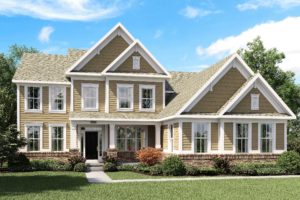 Washington, D.C.—Over the last few weeks, major housing data series have revealed how strong a year 2020 was, in spite of changes caused by the virus crisis and economic downturn. Historically low interest rates, a pivot for consumer preferences toward housing and a measurable suburban shift for location decisions have lifted homes sales, home building and remodeling since last spring, according to NAHB chief economist, Robert Dietz.
Washington, D.C.—Over the last few weeks, major housing data series have revealed how strong a year 2020 was, in spite of changes caused by the virus crisis and economic downturn. Historically low interest rates, a pivot for consumer preferences toward housing and a measurable suburban shift for location decisions have lifted homes sales, home building and remodeling since last spring, according to NAHB chief economist, Robert Dietz.
Because of historically low inventory levels, single-family housing starts increased 11.7% for 2020 as a whole, increasing to 991,000 total builds. That number will rise further in 2021, eclipsing the 1 million level for the first time since the Great Recession. Multi-family five-plus unit starts declined a little more than 3%. However, permits for this class were down almost 11%, pointing to declines for apartment construction in 2021 before stabilizing with an improving labor market as we head into 2022.
The lack of inventory and strong demand—particularly for single-family homes in the suburbs—boosted home price growth across 2020. According to the S&P CoreLogic Case-Shiller Index, in November, homes prices were 9% higher than a year ago. Although these price gains represent a significant increase in wealth for existing home owners, such cost increases may price out prospective buyers from the market in 2021, especially as interest rates trend somewhat higher.
Indeed, some measures of home sales have leveled off recently. New home sales in December showed only a 1.8% gain. And while sales were up a staggering 18.8% in 2020 as a whole, the monthly seasonally adjusted annual rate is down 14% from the year’s peak pace in July. The resale market is showing similar trends. The NAR Pending Home Sales Index has now declined for four consecutive months. And while the backward looking measure of completed existing home sales has leveled off in recent months, the 2020 total reached a 14-year high with inventory down to an incredibly low 1.9-month.
Although some return to long-run trends is expected, overall housing conditions remain robust. The NAHB/Wells Fargo Housing Market Index stands at a solid score of 83, off a record high of 90 in November, and the Remodeling Market Index is at a level of 79, indicating ongoing positive market conditions for the home improvement sector.
The recent weakening in builder confidence is related to the renewed surge in lumber pricing—now nearing mid-September highs in terms of price—and concerns regarding increased regulatory burdens in the coming two years. That said, the housing share of GDP has recovered to historic norms, with 17.7% of national economic output connected to home building and the flow of housing services.
